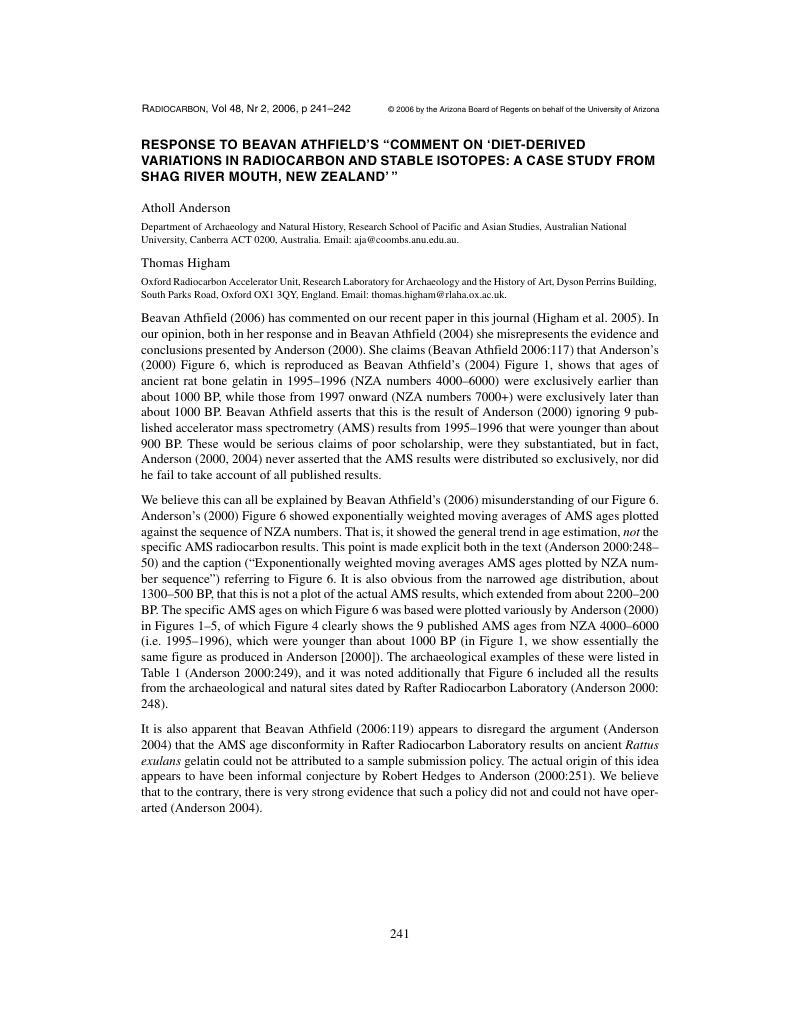No CrossRef data available.
Article contents
Response to Beavan Athfield's “Comment on ‘Diet-Derived Variations in Radiocarbon and Stable Isotopes: A Case Study from Shag River Mouth, New Zealand’”
Published online by Cambridge University Press: 18 July 2016
Abstract
An abstract is not available for this content so a preview has been provided. As you have access to this content, a full PDF is available via the ‘Save PDF’ action button.

Information
- Type
- Articles
- Information
- Copyright
- Copyright © 2006 by the Arizona Board of Regents on behalf of the University of Arizona
References
Anderson, AJ. 2000. Differential reliability of 14C AMS ages of Rattus exulans bone gelatin in South Pacific prehistory.
Journal of the Royal Society of New Zealand
30(3):243–61.CrossRefGoogle Scholar
Anderson, AJ. 2004. The age disconformity in AMS radiocarbon results on Rattus exulans bone.
New Zealand Journal of Archaeology
24(2002):149–56.Google Scholar
Beavan Athfield, N. 2004. Reliability of 14C AMS dating of rat and bird bone: implications for the timing of New Zealand Holocene vertebrate extinctions. In: Higham, TFG, Bronk Ramsey, C, Owen, DC, editors.
Radiocarbon and Archeaeology: Proceedings of the Fourth Symposium, Oxford 2002.
Oxford University School of Archaeology Monograph 62. Oxford: Oxbow Books. p 105–18.Google Scholar
Beavan Athfield, N. 2006. Comment on “Diet-derived variations in radiocarbon and stable isotopes: a case study from Shag River Mouth, New Zealand.”
Radiocarbon
48(1):117–21.Google Scholar
Higham, TFG, Anderson, AJ, Bronk Ramsey, C, Tompkins, C. 2005. Diet-derived variations in radiocarbon and stable isotopes: a case study from Shag River Mouth, New Zealand.
Radiocarbon
47(3):1–9.CrossRefGoogle Scholar

